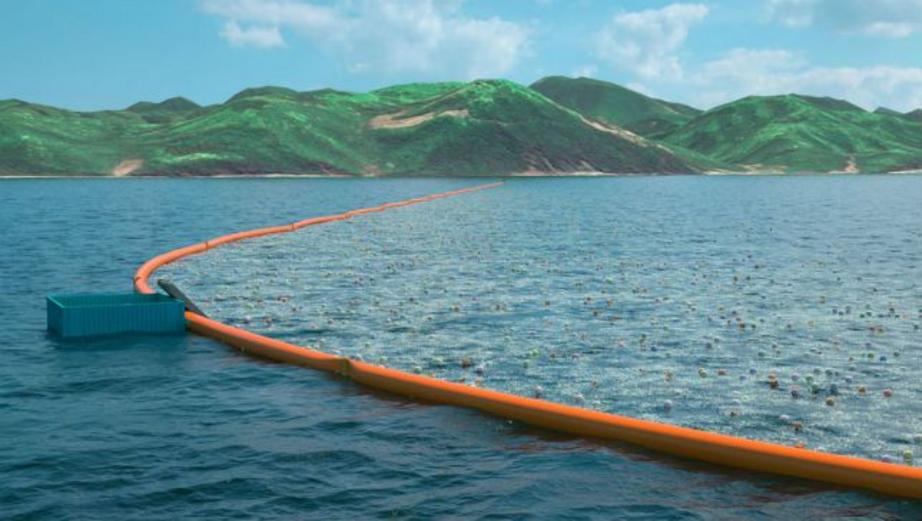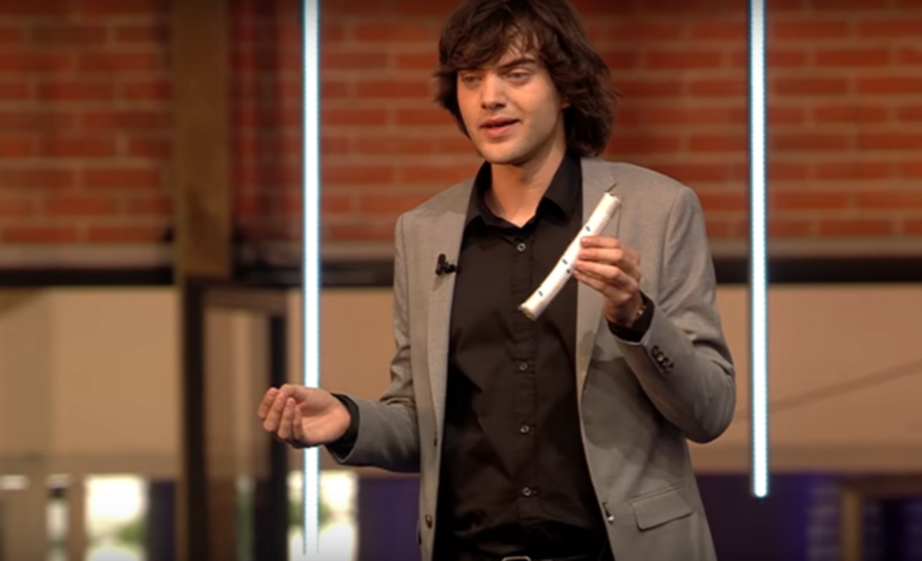Remember that kid who invented a way to clean up ocean plastic?
... He's back, and it's happening
Boyan Slat's solar-powered booms will soon be in the Pacific Ocean.
Boyan Slat was just a regular Dutch high-school student when he went on a diving trip to Greece. Once underwater, he was surrounded by plastic waste. “There were more plastic bags than fish,” he told MNN a few years back. “That was the moment I realized it was a huge issue and that environmental issues are really the biggest problems my generation will face.”
Like many of us, Slat had heard about various giant garbage patches the world over, and he figured that someone, somewhere, was working to solve it. During his research after the Greece trip, he learned that there were a few cleanup ideas out there, but most of them relied on using nets to filter the plastic out of the water. Those nets also scooped up a lot of fish, turtles and other sea life, and weren't practical. So he worked on developing his own solution.
"I finally decided to put both university and my social life on hold to focus all my time on developing this idea. I wasn’t sure if it would succeed, but considering the scale of the problem I thought it was important to at least try,” said Slat.
And now, despite more than a few scientists denouncing his ideas, he's set to launch his garbage-collecting booms in 2018, after a two-year feasibility study. Just six years from his Greek dive to solution, the $320 million donated to his cause seem to have been worthwhile investments. According to Slat's current estimates, his booms will collect about 50 percent of the Great Pacific Ocean Garbage Patch in just five years (his previous estimate was that he would be able to collect 42 percent of it over 10 years).
A garbage-collecting coastline in the water
 If the pilot project is a success, Slat plans to launch a bigger system to tackle the Great Pacific Garbage Patch. (Photo: The Ocean Cleanup)
If the pilot project is a success, Slat plans to launch a bigger system to tackle the Great Pacific Garbage Patch. (Photo: The Ocean Cleanup)
The design works via massive floating booms that sit on top of the water and act like a mini-coastline. Just like beaches collect our plastic waste, the boom can passively gather plastic waste and pull it to its center. Once a month or so, a boat would go collect the garbage.
Slat's recent collection estimates have gone up due to a design innovation — specifically, iterative engineering. Instead of attaching the booms to the ocean floor, which was an engineering nightmare, they can be suspended in the ocean attached to anchors that float deep below. This would allow the booms to slowly move around, but not so much as would prevent them from doing their job. The booms would mostly be held in place by deep-water tides, which move at a slow, but regular rate.
"The forces moving the plastic around are the same forces moving the cleanup systems. In other words, where the plastic goes, the cleanup systems automatically go as well, like plastic magnets. The concept is more feasible, and also more efficient at capturing plastic," explains the Ocean Cleanup site. Slat calls his new system a "fleet" of cleanup booms.
The whole thing is solar-powered, modular and flexible to move with the tides. Originally, "Slat had imagined one massive device, perhaps extending as much as 60 miles. He now envisages up to 50 devices of 0.6 miles each. That constellation is more scalable and less risky, he says; if one device breaks down, there will still be 49 others operating at any time. Plus, they can be funded as cash flow allows, rather than all at once," writes Ben Schiller for Fast Company.
Time is of the essence
One of those .6 mile-long segments will be sent out for testing later this year, and the full system should be ready two years ahead of schedule. That's important, because as Slat points out in the video above, right now just 3 percent of the plastics in his team's surveys are microplastics — most are still large enough pieces that are easy to fish out.
"This is what scares me most," Slat says. "What will happen over the next few decades is that these large objects will start breaking down into these small and dangerous microplastics, increasing the amount of microplastics dozens of times. Unless we clean it up. We must defuse this ticking time-bomb," he says.
It's a huge job — in the Pacific garbage patch alone, scientists estimate 5 trillion pieces of plastic are floating around—some of it up to 40 years old. But Slat has done measurements, worked with scientists and used computer models to determine how much his booms can collect, and he's confident he can capture tons of plastic every year, and bring it back to shore.
And what to do with all the plastic waste that's recovered? Well, there's opportunity there. To help pay for the operation, this marketable plastic can be recycled into all sorts of stuff, from car bumpers, to plastic logs, to sunglasses and more.

